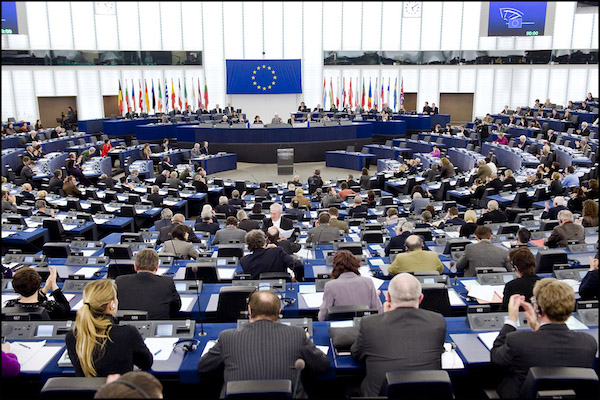The issues of high priced medicines and problems with access to medicines have for many years been themes belonging to the realm of global health. We are familiar with images of people in African capitals demonstrating in the streets for access to medicines, such as those to treat HIV/AIDS. Today these images can be shot in the streets of Madrid, London, Bucharest, Athens, San Francisco and Washington DC concerning access to a number of medicines. High-income countries, including those in the European Union, are struggling with the burden of high priced medicines on their health budgets. In some cases this is now leading to rationing of proven effective, essential medications even in high-income countries.
The most notorious examples of high priced medicines are the new direct action antivirals (DAAs) for the treatment of hepatitis C. The DAAs in the Netherlands are priced at 54.000 euro per 12-week curative treatment. In France, Médecins du Monde has calculated that providing DAAs for all people with hepatitis C in France would exceed the annual budget of the public hospitals in Paris. Another example is the rising cost of cancer treatment. The increase in price of breast cancer medications has led to crisis situations in the UK, where cancer groups have asked the government to invoke compulsory licensing after the government announced it would not longer pay for the treatment. Compulsory licensing is a well-known TRIPS flexibility that was routinely used in the early 2000s for the supply of AIDS medicines in the developing world. (In the EU a compulsory licence can only be granted by individual EU countries.)
The high price of medicines is generally caused by a monopoly position in the market sustained by patents or regulatory measures that exclude generic competition. Such exclusivity is needed to encourage investment in the development of new medicines. However, these state granted monopolies keep the price of medicines high well after the R&D investments have been earned back. This phenomenon is increasingly recognised as an imbalance in the patent system. The UN Secretary General has established a High-Level Panel on Access to Medicines to address the misalignment between the rights of inventors, international human rights law, trade rules and public health where it impedes the innovation of and access to health technologies. He asked the Panel to examine issues in high-income as well as low-income countries.
Under the leadership of the Dutch presidency, the Council of the European Union has decided to take action. On 17 June 2016 the Council adopted the following: “Conclusions on strengthening the balance in the pharmaceutical systems in the EU and its Member States”. (The European Parliament recently held a workshop on the issue where I spoke that can be watched here.)
The European Union has experience with a variety of market exclusivity instruments for pharmaceuticals in addition to the national patent systems of its member states. Examples include orphan drug regulation offering 10-12 years market exclusivity for a product or indication developed for a rare disease, supplementary protection certificate (SPC) for medicines that gives up to 5 years of additional patent protection over the mandated minimum 20 year period, paediatric exclusivity offering up to 6 months SPC for patented products, and 8-10 years of data exclusivity for the development of paediatric indications of non patented products.
These exclusivity mechanisms were designed to stimulate the development of new medicines and new indications that are neglected by the industry because of lack of profitability. They increase the industry’s ability to retain a monopoly position in the market. They have in common that they contribute to high pricing of medicines. There is also growing evidence that the pharmaceutical industry abuses these mechanisms by “salami-slicing” a product in indications for small patient groups in order to obtain orphan drug benefits. Several of the top ten best-selling medicines in the world benefit from an orphan drug designation. Annual sales on some of these drugs ranging from 5 to 14 billion USD a year would seem to indicate that the lack of profitability was not the issue. In the face of economic austerity and the pressure on health budgets, the question the Council now has put on the table is, do the benefits of these incentive mechanisms actually outweigh the cost?
The Council has outlined the following actions for the European Commission:
- Streamline implementation orphan regulation; ascertain proper application of the rules, incentives and rewards and revise them if necessary;
- Create an overview of EU pharmaceutical legislation in relation to IP related incentives and their intended purposes;
- Analyse effects of these incentives on innovation, accessibility, availability and affordability of medicines, as well as price strategies of the industry;
- Analyse functioning of the EU pharmaceutical market in terms of transparency, market behaviour, and competition, and strengthen market oversight
- Recommend possible remedies in the context of the agenda 2017-2020.
The question now is how much gusto the Commission will display to grab this opportunity and show it is able to respond to the concerns of the European public about high medicines prices. The European Commission is often seen as too close and too cosy with the industry at the expense of the development of more public interest oriented regulations. The Brexit vote – partly driven by concerns about health care costs – should be a wakeup call. The Council has laid out a clear agenda for the Commission. Let’s hope the Commission grabs this opportunity to show it can deliver by creating a better balanced pharmaceutical R&D environment that meets people’s needs and does not break the bank of national health care systems.
This post originally appeared on the University of Groningen’s Global Health Law blog.
Ellen ‘t Hoen, LLM PhD, is a lawyer and public health advocate with over 30 years of experience working on pharmaceutical and intellectual property policies.
